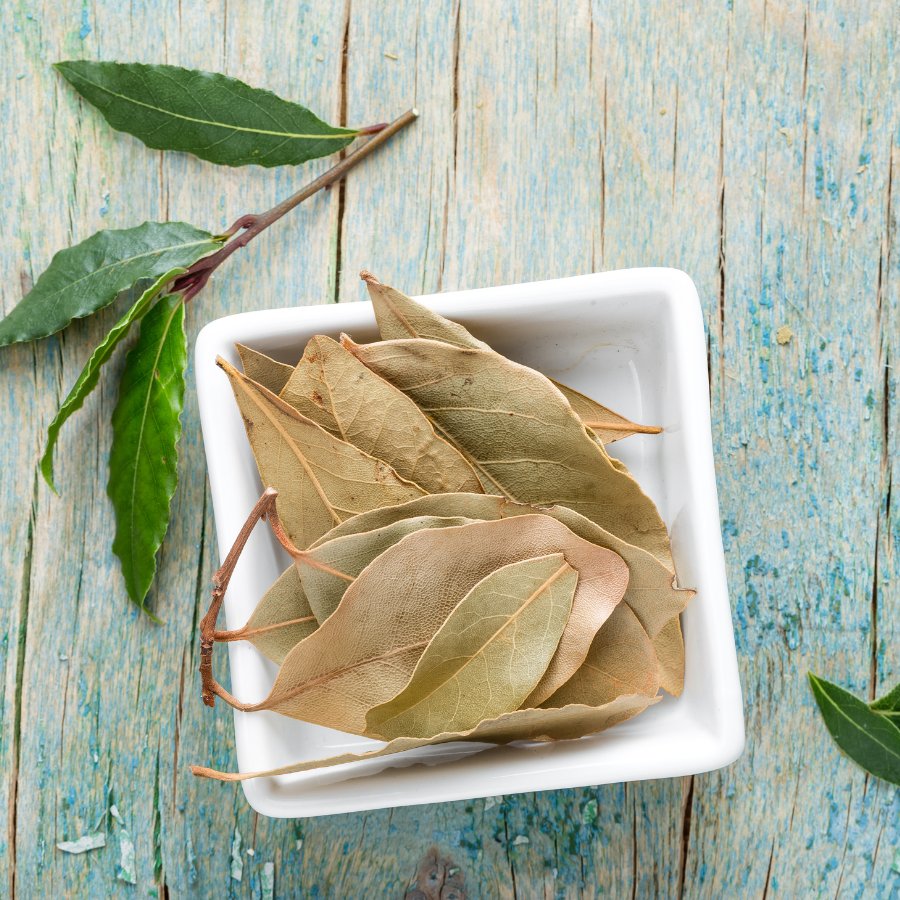Vietnamese bay laurel, scientifically known as Laurus nobilis, belongs to the Lauraceae family. It is commonly known as bay tree or bay laurel, and it is native to the Mediterranean region. This plant is quite popular in herb gardens.
Asian countries, including Vietnam, often cultivate bay laurel extensively. Bay laurel is typically found in forested areas near water streams, where the humidity is high. Bay laurel is an evergreen shrub with many branches. Its leaves are thick, smooth, and have a dark, bright green color. They are arranged alternately, have short petioles, a pointed shape, smooth edges, and wavy margins.
“To use bay laurel leaves properly, bringing out the maximum benefits and flavors, it is best to add the leaves 5 or 10 minutes before finishing the cooking process of hot dishes, and remember to remove the bay leaves afterward; otherwise, along with its pleasantly aromatic essential oil, the spicy essence will penetrate the food,” chef Sergei Sinitsyn shared on Sputnik.
Bay laurel leaves give off a very pleasant aroma, soothing the nerves and helping to relax the mind.
Although a common plant in Vietnam, bay laurel leaves are quite expensive and considered a precious and rare medicinal herb.
Bay laurel leaves originated from the Mediterranean region, with a distinctive bitter, spicy taste and a slight pleasant aroma. They are commonly used in cooking for seasoning, sautéing, flavoring, or reducing the fishy smell of meat and fish, as well as in various dishes such as soups…
Bay laurel leaves can be harvested at any time of the year from a fully mature tree. After harvesting the leaves, they should be allowed to dry for 48-72 hours. Fresh dried leaves have a better and deeper flavor. To achieve the best quality, it is advisable to avoid harvesting when the tree is still wet.

Vietnam’s bay laurel exports are growing strongly, with products being sent to many countries worldwide. Vietnam leverages its advantages in climate and land to produce high-quality bay laurel to meet the international market’s demand for a unique spice in cuisine.
According to a report from the Import-Export Department under the Ministry of Industry and Trade, in October 2023, bay laurel exports brought in revenue of $33,000 for Vietnam. This figure represents a growth of 323.9% compared to October 2022. In the first 10 months of 2023, the export turnover of this item reached $936,000, an increase of 1,738.1% compared to the same period in 2022.
Vietnamese bay laurel is highly consumed in many regions, such as South Asia (India, Bangladesh), East Asia (Japan, South Korea, Taiwan, China), the United States, and European Union countries. In addition to fresh leaves, bay laurel is available in dried leaves, frozen leaves, powder, and extracted essential oil forms. Vietnam often exports dried leaves to foreign markets.

Since the area of bay laurel cultivation in Vietnam is still limited, the supply of dried bay laurel leaves for the market is not high. Therefore, the selling price of this product has increased by about 20 – 30% compared to previous years due to its scarcity.
In the domestic market, dried bay laurel leaves are sold by agricultural companies and supermarkets for about 50,000 – 80,000 VND/100g. Meanwhile, in American supermarkets, the price of bay laurel leaves ranges from 1.5 – 2 million VND/kg.
In addition, bay laurel leaves have many uses in traditional medicine, such as helping to reduce respiratory-related symptoms and repel insects.
In bay laurel leaves, there are two anti-inflammatory compounds, myrcene and eugenol, which easily evaporate when exposed to heat.
Therefore, burning bay laurel leaves to inhale has the effect of reducing respiratory-related swelling and inflammation symptoms. Bay laurel essential oil helps cleanse the lungs, reduce lung congestion, keep the respiratory system clear, and facilitate breathing.
Information from the Union of Science and Technology Associations of Quang Ngai province states that bay laurel has a spicy, bitter taste, warm nature, and functions to resolve stagnation, reduce inflammation, induce anesthesia, calm nerves, and relieve pain. The leaves also have a stimulating effect on saliva flow. They are commonly used in treating low back pain, bone fractures, injuries from falls, toothaches, gastric pain, diarrhea, dysentery, and insect and snake bites. They are also used to treat meningitis or produce local anesthesia.
Vietnam has many spices that the world loves. Among them are black pepper, cinnamon, and star anise… Vietnam is the world’s leading producer and exporter of black pepper, the number one exporter of bay laurel, and the second largest exporter of star anise. This industry aims to export $2 billion worth of products by 2025.
The demand for spices in various markets remains high, not only in the food industry but also in ongoing research and development to meet the demand in the Pharmaceutical, Cosmetics, and Functional Food industries. This will be a great opportunity for Vietnam’s agriculture to further develop in the coming years.












